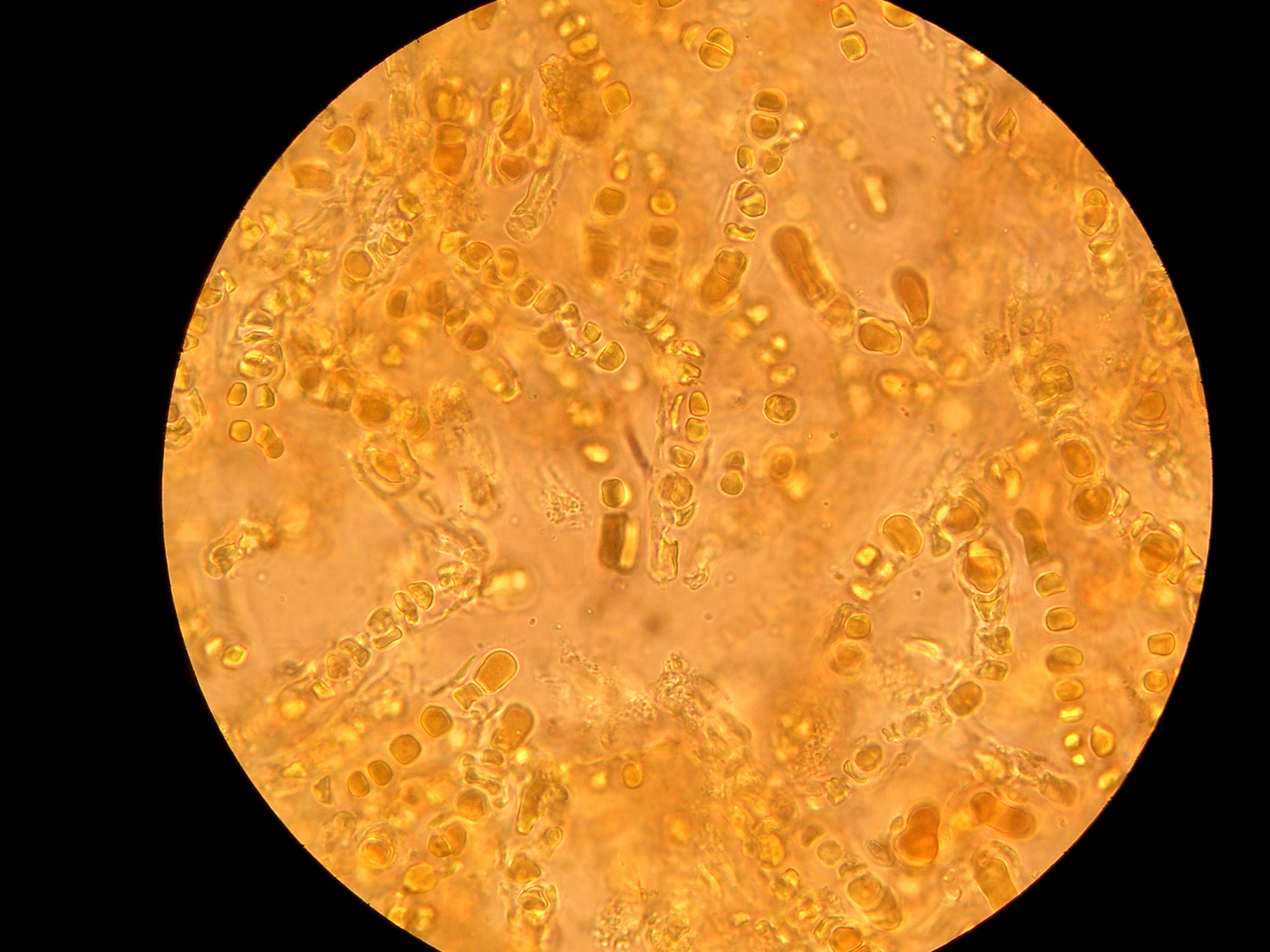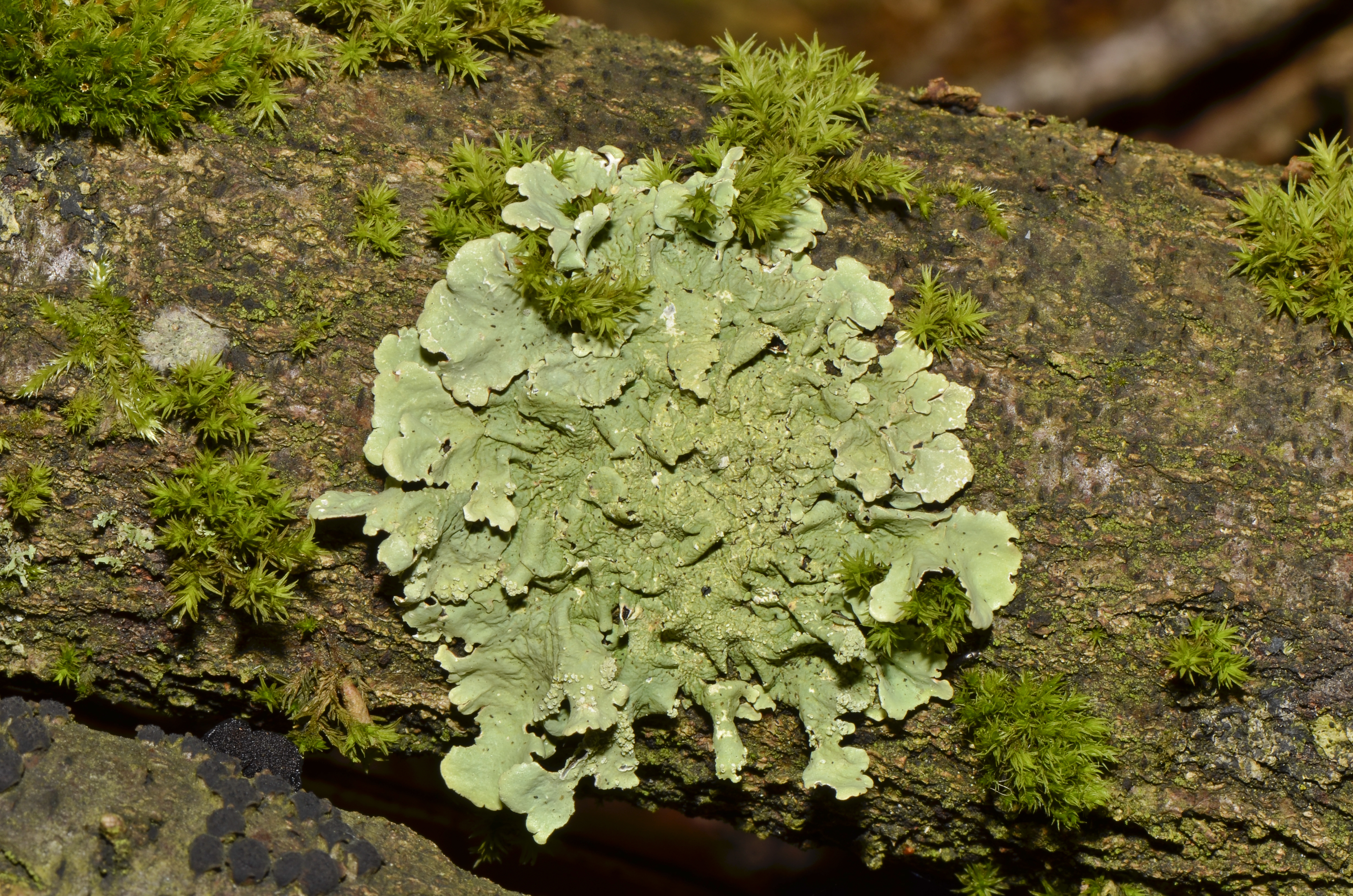|
Flavopunctelia Lobulata
''Flavopunctelia lobulata'' is a species of foliose lichen in the family Parmeliaceae. Found in Argentina, it was described as a new species in 1987 by lichenologists John Alan Elix and Mónica Adler. The type specimen was collected near Las Pailas (Salta Province), where it was found growing over mosses at an elevation of . It is similar in appearance to ''Flavopunctelia praesignis'', but differs from that species in being terricolous rather than corticolous, and by its smaller thalli, which measure in diameter. The specific epithet In taxonomy, binomial nomenclature ("two-term naming system"), also called nomenclature ("two-name naming system") or binary nomenclature, is a formal system of naming species of living things by giving each a name composed of two parts, bot ... refers to its dense, somewhat erect lobulae (small lobes) in the centre of the thallus. References lobulata Lichen species Lichens described in 1987 Lichens of Argentina Taxa named by ... [...More Info...] [...Related Items...] OR: [Wikipedia] [Google] [Baidu] |
John Alan Elix
John Alan (Jack) Elix (born 1941) emeritus professor in chemistry at the Australian National University, is an organic chemist who has contributed in many fields: lichenology, lichen chemotaxonomy, plant physiology and biodiversity and natural product chemistry. He has authored 2282 species names, and 67 genera in the field of mycology. Education His first degree, B.Sc., and his Ph.D were both in organic chemistry from the University of Adelaide. This was followed by post-doctoral years at the University of Cambridge and then a D.Sc. in natural products chemistry from the Australian National University. Career Elix spent a post doctoral year in 1966 at Cambridge, returning to Australia in 1967 to a lectureship in chemistry at the ANU. He retired as professor of chemistry in 2002, becoming professor emeritus. By 1975 he had already published several papers on the organic chemistry of lichens, and ultimately leading to work on the evolution, taxonomy and phylogeny of liche ... [...More Info...] [...Related Items...] OR: [Wikipedia] [Google] [Baidu] |
Terricolous Lichen
A terricolous lichen is a lichen that grows on the soil as a substrate Substrate may refer to: Physical layers *Substrate (biology), the natural environment in which an organism lives, or the surface or medium on which an organism grows or is attached ** Substrate (locomotion), the surface over which an organism lo .... An example is some members of the genus '' Peltigera''. References Lichenology {{lichen-stub ... [...More Info...] [...Related Items...] OR: [Wikipedia] [Google] [Baidu] |
Lichens Described In 1987
A lichen ( , ) is a composite organism that arises from algae or cyanobacteria living among filaments of multiple fungi species in a mutualistic relationship.Introduction to Lichens – An Alliance between Kingdoms . University of California Museum of Paleontology. Lichens have properties different from those of their component organisms. They come in many colors, sizes, and forms and are sometimes plant-like, but are not plants. They may have tiny, leafless branches ( fruticose); flat leaf-like structures ( foliose); grow crust ... [...More Info...] [...Related Items...] OR: [Wikipedia] [Google] [Baidu] |
Lichen Species
A lichen ( , ) is a composite organism that arises from algae or cyanobacteria living among filaments of multiple fungi species in a mutualistic relationship.Introduction to Lichens – An Alliance between Kingdoms . University of California Museum of Paleontology. Lichens have properties different from those of their component organisms. They come in many colors, sizes, and forms and are sometimes plant-like, but are not s. They may have tiny, leafless branches ( fruticose); flat leaf-like structures ( [...More Info...] [...Related Items...] OR: [Wikipedia] [Google] [Baidu] |
Flavopunctelia
''Flavopunctelia'' is a genus of foliose lichens in the family Parmeliaceae. The genus contains species that are widespread in temperate and tropical areas. The genus is characterised by broad, yellow-green lobes, point-like (''punctiform'') pseudocyphellae on the thallus surface, and bifusiform conidia (i.e., threadlike with a swelling at both ends). All species contain usnic acid as a major secondary chemical in the cortex. ''Flavopunctelia'' was originally conceived as a subgenus of ''Punctelia'' by Hildur Krog in 1982; Mason Hale promoted it to generic status in 1984. Species *'' Flavopunctelia borrerioides'' *'' Flavopunctelia darrowii'' *''Flavopunctelia flaventior'' *'' Flavopunctelia lobulata'' *'' Flavopunctelia praesignis'' *''Flavopunctelia soredica ''Flavopunctelia soredica'' is a species of foliose lichen in the family Parmeliaceae. It was first described as ''Parmelia soredica'' by Finnish botanist William Nylander in 1872. In 1982, Hildur Krog t ... [...More Info...] [...Related Items...] OR: [Wikipedia] [Google] [Baidu] |
Botanical Name
A botanical name is a formal scientific name conforming to the ''International Code of Nomenclature for algae, fungi, and plants'' (ICN) and, if it concerns a plant cultigen, the additional cultivar or Group epithets must conform to the '' International Code of Nomenclature for Cultivated Plants'' (ICNCP). The code of nomenclature covers "all organisms traditionally treated as algae, fungi, or plants, whether fossil or non-fossil, including blue-green algae ( Cyanobacteria), chytrids, oomycetes, slime moulds and photosynthetic protists with their taxonomically related non-photosynthetic groups (but excluding Microsporidia)." The purpose of a formal name is to have a single name that is accepted and used worldwide for a particular plant or plant group. For example, the botanical name '' Bellis perennis'' denotes a plant species which is native to most of the countries of Europe and the Middle East, where it has accumulated various names in many languages. Later, the plant w ... [...More Info...] [...Related Items...] OR: [Wikipedia] [Google] [Baidu] |
Thallus
Thallus (plural: thalli), from Latinized Greek (), meaning "a green shoot" or " twig", is the vegetative tissue of some organisms in diverse groups such as algae, fungi, some liverworts, lichens, and the Myxogastria. Many of these organisms were previously known as the thallophytes, a polyphyletic group of distantly related organisms. An organism or structure resembling a thallus is called thalloid, thallodal, thalliform, thalline, or thallose. A thallus usually names the entire body of a multicellular non-moving organism in which there is no organization of the tissues into organs. Even though thalli do not have organized and distinct parts ( leaves, roots, and stems) as do the vascular plants, they may have analogous structures that resemble their vascular "equivalents". The analogous structures have similar function or macroscopic structure, but different microscopic structure; for example, no thallus has vascular tissue. In exceptional cases such as the Lemnoid ... [...More Info...] [...Related Items...] OR: [Wikipedia] [Google] [Baidu] |
Corticolous Lichen
A corticolous lichen is a lichen that grows on bark.Alan Silverside's Lichen Glossary (a-f), Alan Silverside/ref> This is contrasted with lignicolous lichen, which grows on wood that has had the bark stripped from it,Alan Silverside's Lichen Glossary (g-o), Alan Silverside/ref> and saxicolous lichen, which grows on rock.Alan Silverside's Lichen Glossary (p-z), Alan Silverside/ref> Examples of corticolous lichens include the crustose lichen ''Graphis plumierae'', foliose lichen ''Melanohalea subolivacea'' and the fruticose ''Bryoria fuscescens ''Bryoria fuscescens'' is a species of lichen of the family Parmeliaceae. As of July 2021, its conservation status has not been estimated by the IUCN. In Iceland, where it grows as an epiphyte on downy birch stems and branches, it is classified ...''.Náttúrufræðistofnun Íslands celandic Institute of Natural History(1996). Válisti 1: Plöntur.' (in Icelandic) Reykjavík: Náttúrufræðistofnun Íslands. References Lichenolog ... [...More Info...] [...Related Items...] OR: [Wikipedia] [Google] [Baidu] |
Flavopunctelia Praesignis
''Flavopunctelia praesignis'' is a species of foliose lichen in the family Parmeliaceae. It was first described as ''Parmelia praesignis'' by Finnish botanist William Nylander in 1872. In 1982, Hildur Krog transferred it to the subgenus ''Flavopunctelia'' of her newly circumscribed genus ''Punctelia'', created to contain '' Parmelia'' species with punctate (point-like) pseudocyphellae. Mason Hale raised this subgenus to generic status a couple of years later. The lichen is colloquially known as the fruiting speckled greenshield. It is found in the southern United States, in various states of Mexico, and in South America. It has also been reported from Kenya, but that may be due to misidentification. A study on the post‐fire recolonization of dominant epiphytic lichen species on silverleaf oak ''Quercus hypoleucoides'', the silverleaf oak or the whiteleaf oak is a North American species of oak tree or shrub. It grows in the southwestern United States and northern Mexico ... [...More Info...] [...Related Items...] OR: [Wikipedia] [Google] [Baidu] |
Foliose Lichen
Foliose lichen is one of the morphological classes of lichens, which are complex organisms that arise from the symbiotic relationship between fungi and a photosynthetic partner, typically algae. This partnership allows lichen to live in diverse climates that can range from cold, dry mountains to wet, warm valleys. Lichens develop quite slowly with recorded growth rates of 0.01–27mm/year depending on the species. Their lifespan averages between 30 and 60 years. Lichens have a main body part called the thallus, which is composed of hyphae, and houses the cortex and medulla. The cortex contains the photosynthetic cells while the medulla allows for gas exchange and makes up the bulk of the lichen's thallus. There are three main types of lichens: crustose, foliose, and fruticose. Foliose lichen are characterised by flattened leafy thalli, and an upper and lower cortex. Many have numerous layers, which are stratified, and aid in identifying different types. Foliose lichens attac ... [...More Info...] [...Related Items...] OR: [Wikipedia] [Google] [Baidu] |
Moss
Mosses are small, non-vascular flowerless plants in the taxonomic division Bryophyta (, ) '' sensu stricto''. Bryophyta ('' sensu lato'', Schimp. 1879) may also refer to the parent group bryophytes, which comprise liverworts, mosses, and hornworts. Mosses typically form dense green clumps or mats, often in damp or shady locations. The individual plants are usually composed of simple leaves that are generally only one cell thick, attached to a stem that may be branched or unbranched and has only a limited role in conducting water and nutrients. Although some species have conducting tissues, these are generally poorly developed and structurally different from similar tissue found in vascular plants. Mosses do not have seeds and after fertilisation develop sporophytes with unbranched stalks topped with single capsules containing spores. They are typically tall, though some species are much larger. ''Dawsonia'', the tallest moss in the world, can grow to in height. Ther ... [...More Info...] [...Related Items...] OR: [Wikipedia] [Google] [Baidu] |
Salta Province
Salta () is a province of Argentina, located in the northwest of the country. Neighboring provinces are from the east clockwise Formosa, Chaco, Santiago del Estero, Tucumán and Catamarca. It also surrounds Jujuy. To the north it borders Bolivia and Paraguay and to the west lies Chile. History Before the Spanish conquest, numerous native peoples (now called Diaguitas and Calchaquíes) lived in the valleys of what is now Salta Province; they formed many different tribes, the Quilmes and Humahuacas among them, which all shared the Cacán language. The Atacamas lived in the Puna, and the Wichís (Matacos), in the Chaco region. The first conquistador to venture into the area was Diego de Almagro in 1535; he was followed by Diego de Rojas. Hernando de Lerma founded San Felipe de Lerma in 1582, following orders of the viceroy Francisco de Toledo, Count of Oropesa; the name of the city was soon changed to "San Felipe de Salta". By 1650, the city had around five hundred ... [...More Info...] [...Related Items...] OR: [Wikipedia] [Google] [Baidu] |


.jpg)


